Last Chance to Catch NYC's Holiday Notalgia Train
We met the voices of the NYC subway on our nostalgia ride this weekend!


New York City, as a city of immigrants and exiles, can tell the story of many different ethnic communities that have made the city their home. The Statue of Cervantes at New York University’s Willy’s Garden courtyard, located at One-Half Fifth Avenue, near Washington Square Park, reveals significant history of Spain and the United States. This Cervantes Statue dates back to 1986, when the mayor of Madrid, Enrique Tierno Galván, donated the statue to New York City. But the idea of a Cervantes statue in New York goes back at least to the 1860s and 1870s during the Cuban Wars of Independence against Spain. Prior to its current location, the Cervantes statue was located in Bryant Park until 1989. Today, it’s less accessible — tucked in Willy’s Garden where the gate is usually locked.
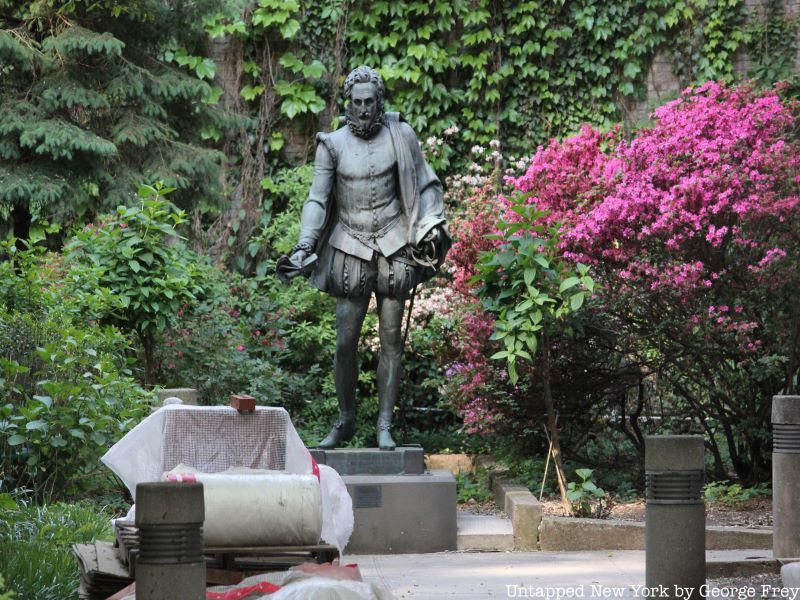
The statue at Willy’s Garden is a replica of Antonio Solá’s cast bronze statue of Cervantes in Madrid, erected in 1835. The original idea for a Cervantes statue in New York dates back to nineteenth-century debates over Spanish national identity and the place of Spain in American political discourse. Spain occupies a paradigmatic place in American history, at times an ally against the British, but another times a rival. As Maria DeGuzman discusses in Spain’s Long Shadow: The Black Legend, Off-Whiteness, and Anglo-American Empire (2005), the Spanish have served as a foil against which the United States rebranded its imperial project in the Americas as morally and racially superior. For American expansionists, Spain was either as an obstacle or a precursor to American domination of the Americas. Spanish imperialism occupied a questionable place among imperial powers, who equated the Spanish to the Ottoman Turks, as an Oriental decaying imperial power.
Starting in the 1830s, Spanish liberals and nationalists sought the figure of Cervantes as the preferred national symbol for a modern image of Spain over other historical figures. This kind of national rebranding became more convenient in the late nineteenth century as Spain hoped to justify its continuing presence in the Caribbean. The figure of Cervantes as a nationalist symbol was uniquely useful as he was both a literary genius and a veteran of the 1571 Battle of Lepanto. The tension between the different images of Spain can be appreciated with the statues of Cervantes in Willy’s Garden and Columbus in Central Park off Center Drive. For a nation with a long complex history, there are many versions of Spain one can look for, but the tendency in the Anglo cultural sphere to essentialize Spain to the Inquisition, imperialism, the Black Legend, and Franco fascists often eclipses any other historical interpretation and appreciation of Spain.
In New York City, the celebration of Cervantes officially commenced in April 1875 when Spanish diplomats and businessmen in the city launched a series of festivities and events, including a funeral mass in commemoration of Cervantes’ death. This celebration of Cervantes sought to rebrand Spain based on the cultural and artistic legacy of the Spanish Golden Age, leaving aside the violent history of imperialism. For New York City’s European immigrant and exile communities, placing statues of their heroes in Central Park became almost a ritual. In 1878, despite the initial enthusiasm, sculptor Fernando Miranda’s design for a bronze statue of Cervantes over a granite pedestal in Central Park failed to raise necessary funds, and by the 1890s, the Spanish elites in New York shifted their attention from Cervantes to compete with Italians over the Columbian Celebration of 1892.
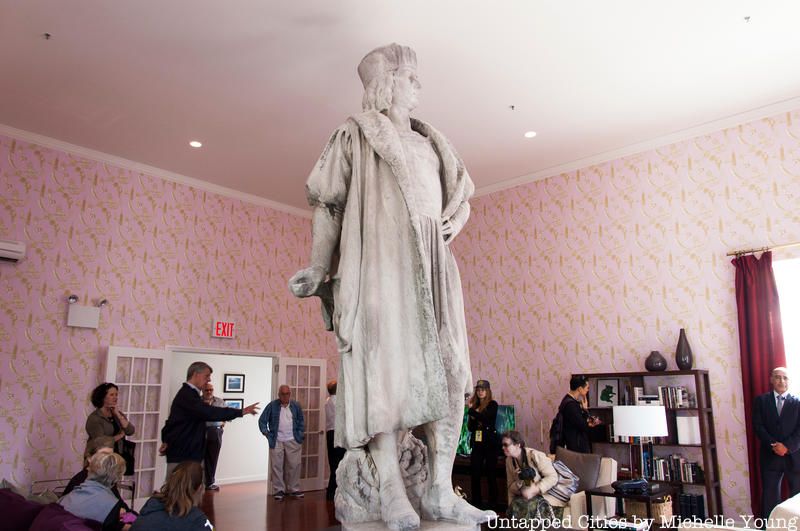
The monument at Columbus Circle by Gaetano Russo and the statue in Central Park by Catalan sculptor Jeronimo Suñol represent different interpretations of Columbus. While the former, dedicated in 1892, was a monument that Italian immigrants funded and built themselves as an expression of belonging to New York, the latter was a Spanish initiative meant to commemorate the 400th anniversary of 1492. Due to delays in funding, the latter was unveiled on May 12th, 1894, in a ceremony hosted by the New York Genealogical and Biographical Society. The Columbus statue by Suñol replaced a failed Spanish proposal for a Columbus fountain at the entrance of Central Park. The Italian version of Columbus, which re-appropriated and reimagined him as a victim, overshadowed the Spanish version of Columbus. Four years later, the image of Spain in the United States only worsened with the Spanish-American War.
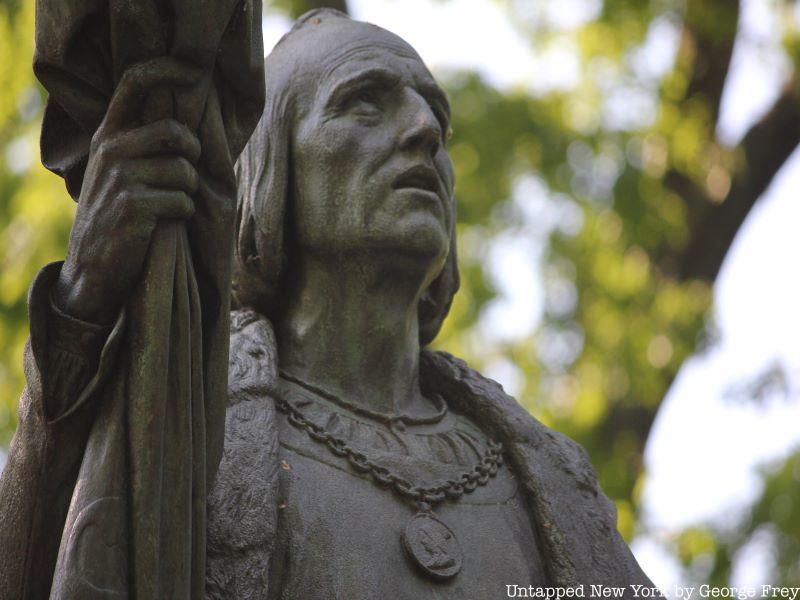
The Columbus statue in Central Park is located 700 yards or so north of Anna Hyatt Huntington’s statue of José Martí, the Cuban nationalist, which is located near the intersection of 56th Street and 6th Avenue. Martí, who spent time in New York as an exile, died in Cuba soon after returning to his homeland to fight against Spanish colonial rule in 1895. These statues and their symbolic opposition should make people question if these statues truly represent a coherent narrative about the United States and the Americas—or are more or less the product of elite diasporas and immigrant communities who lobbied for a place in the landscape of the city.
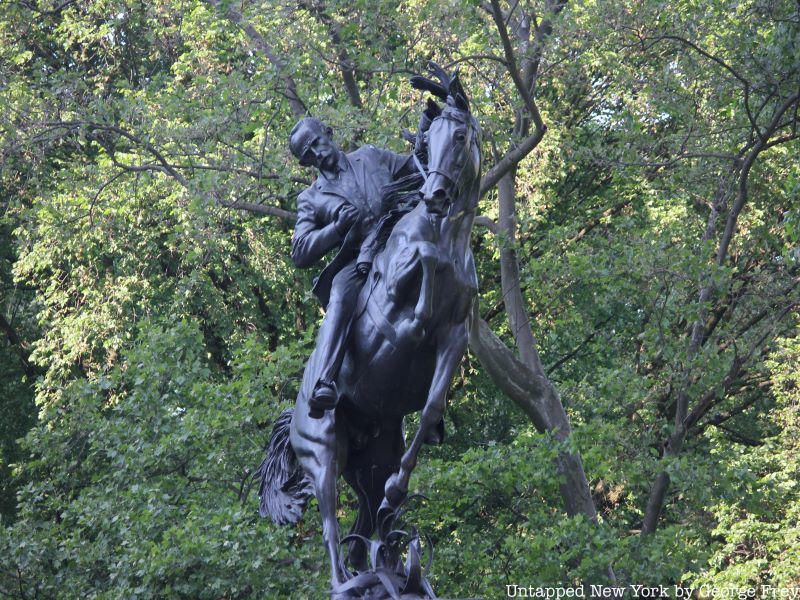
Despite the negative press, Spain also generated profound fascination and admiration in the United States. For example, Spanish art inspired the railroad heir, Archer Huntington, to become a Hispanist and dedicate his life to the collection of Iberian and Latin American art. In 1908, Huntington inaugurated the Hispanic Society of America and Library in New York on West 155th Street and Broadway. On the museum’s plaza, there is a relief sculpture of Don Quixote on his horse created by Huntington. The museum houses over 18,000 works of art and since 2012 has acquired National Historical Landmark status.
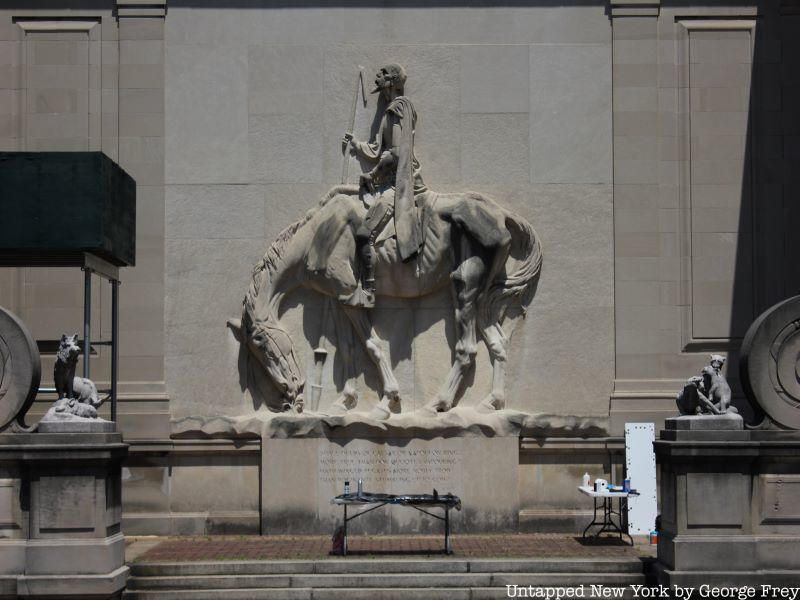
The American interest in Spain has continued to grow in the first half of the twentieth century. World War I diminished the status of the German language in American public schools, which helped the Spanish language enjoy a resurgence. The Spanish Civil War in the late 1930s only increased the fascination with Spain even more, as this war became a symbol for Western intelligentsia of the clash between civilization and fascism. The list of famous Americans lured by early twentieth-century Spain include Ernest Hemingway, Gertrude Stein, John Dos Passos, and Orson Welles.
Next, check out 20 of NYC’s Equestrian Monuments and the History They Tell!
Subscribe to our newsletter